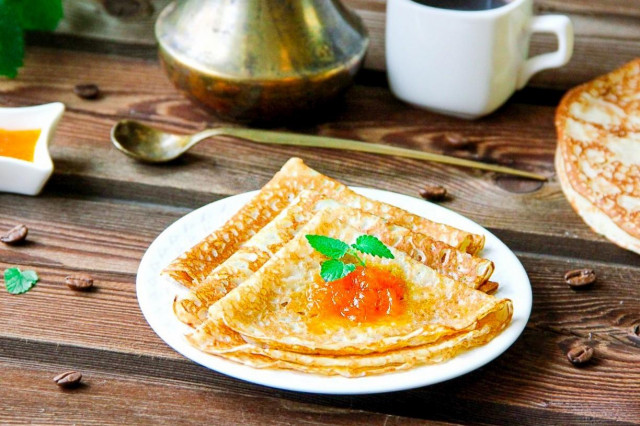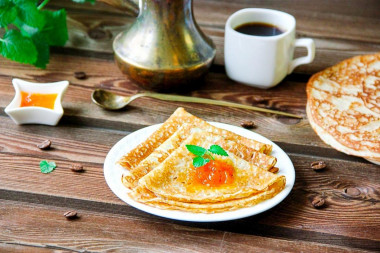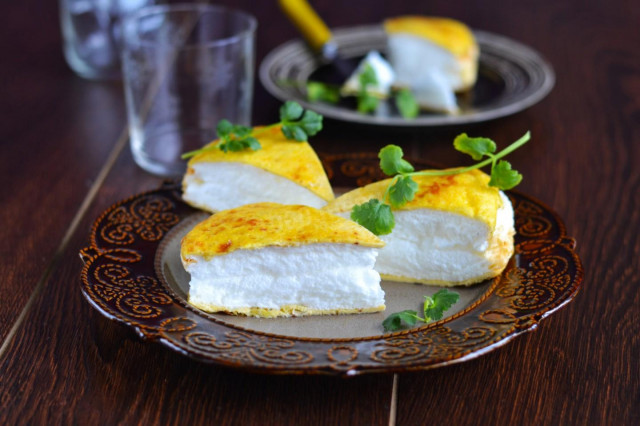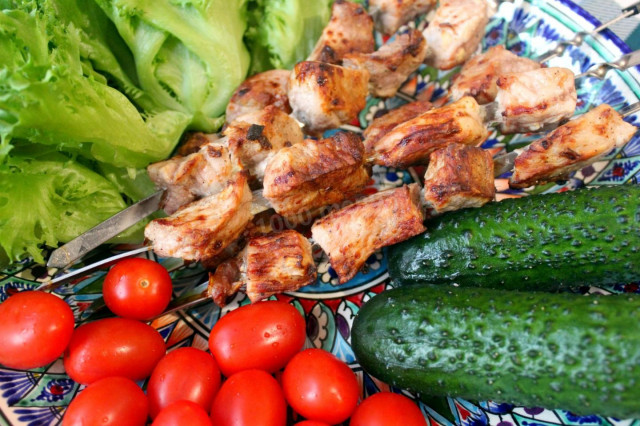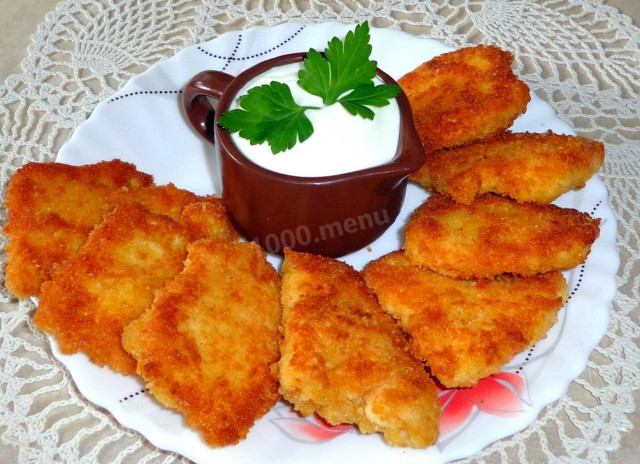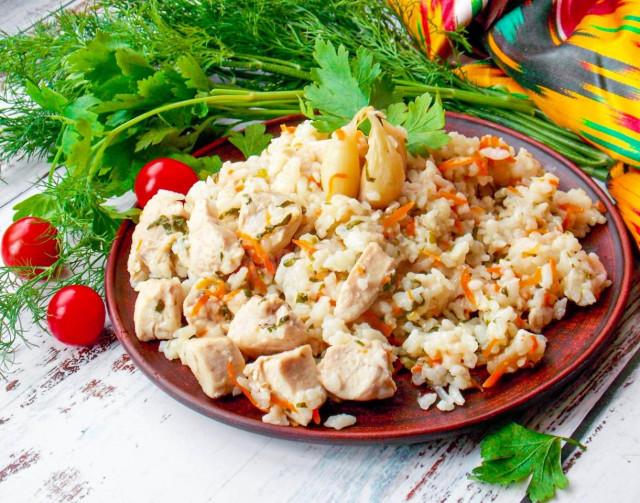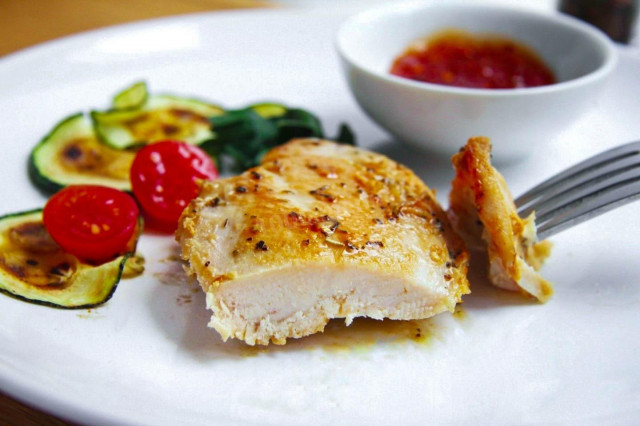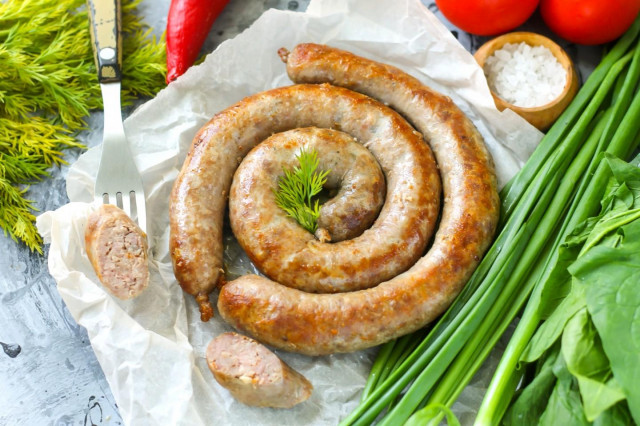Composition / ingredients
Step-by-step cooking
Step 1:
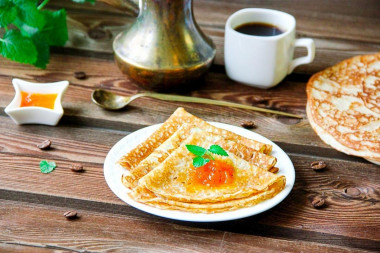
Step 2:
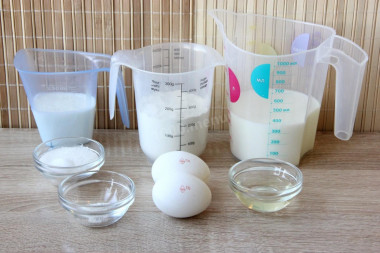
How to make fishnet pancakes with milk and kefir? Prepare the products. Everything should be at room temperature, so take everything you need out of the refrigerator in an hour, and it's even better to warm up the milk slightly so that the finger is warm.
Step 3:
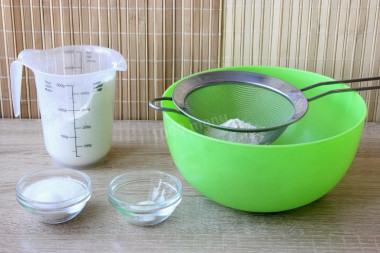
Mix all the dry ingredients: sift flour with an incomplete tsp of baking powder, add fine salt, sugar, mix well./Pancakes with so much sugar will turn out to be moderately sweet, with an intense golden color. With less, they will be paler, with more, they will blush quickly and may even burn/.If you put soda, it also needs to be mixed with flour and not extinguished beforehand - this will make kefir right in the dough.
Step 4:
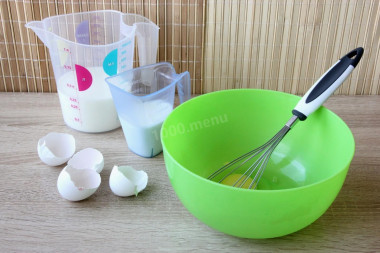
Mix the liquid ingredients separately: first, beat the eggs well with a whisk, until frothy, you can use a mixer at low speed. Then add lukewarm milk, mix and pour in kefir. Stir until smooth. Kefir does not need to be specially heated, it is enough to get it in advance so that it is not cold.
Step 5:
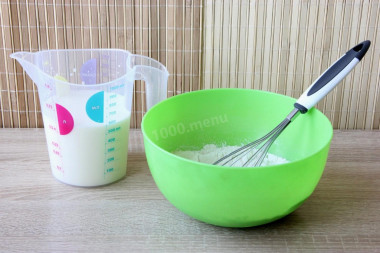
Now pour the liquid ingredients into the resulting flour mixture. To do this, constantly stirring with a whisk, pour in half of the liquid in a trickle. Stir well until smooth, you will get the consistency of thin sour cream.
Step 6:
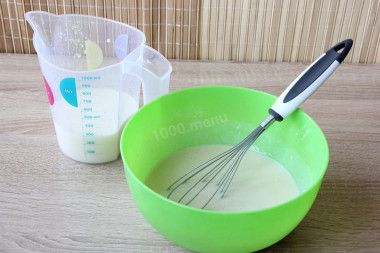
Then, also stirring, pour in the remaining mixture, stir well. This method will help to avoid the formation of lumps, the dough will be smooth, homogeneous, of the correct texture.
Step 7:
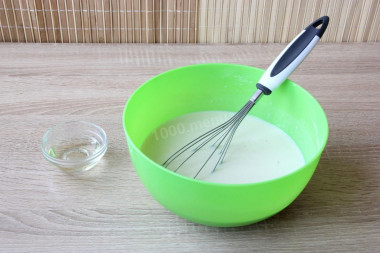
Pour in the refined vegetable oil last. It is necessary to add it, it will not lubricate the pan every time and will improve the taste of pancakes.
Step 8:
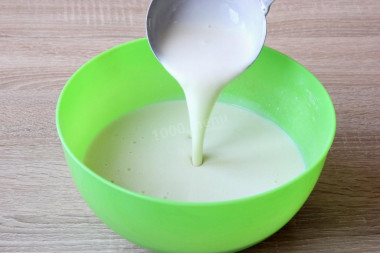
The finished dough should turn out well flowing, the consistency of low-fat cream. Gluten in flour is different, if it turned out thick - add a little warm milk. If liquid, pour out a little dough, stir in 1-2 tablespoons of flour, then pour into the main dough, mix well again. The dough, which is started on baking powder or soda, "does not need to rest" - it can and should be fried immediately.
Step 9:

Heat a frying pan, brush thinly with oil, including the bottom edge of the sides. Lubricate only before the first pancake, all subsequent ones will be removed without problems, even from an aluminum frying pan. Wait until the oil gives a light smoke, lift the pan and switch the heating to medium.
Step 10:
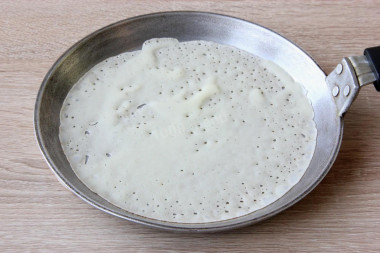
Try to pour the dough in one circle, guessing to scoop the required minimum amount of dough into the ladle. / In the photo I tried to show how it will be if you pour the dough with different thicknesses. Where it is poured thinly, holes appear - pancakes will be thin and delicate, where it is thicker, they are fried well, but there are fewer holes, it really will not affect the taste /. The edges have dried a little, the dough has become matte - swipe around the circle with a thin edge of a spatula or skewer.
Step 11:
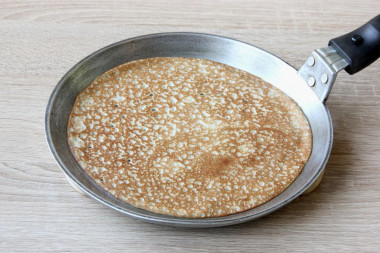
Then bring the spatula under the pancake and it will easily turn over. The second side is fried much faster, 3-4 seconds. There is no time to leave. So bake all the pancakes, stir the dough before each scooping. If necessary, lubricate the pan a little, so the pancakes will have a different openwork pattern. If not lubricated, they will have a uniform, smooth blush, but they will be removed easily.
Step 12:
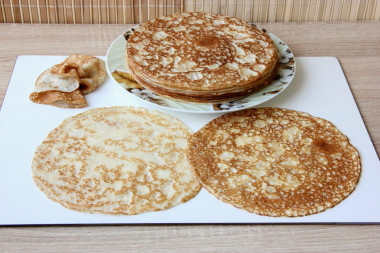
This amount of products will make 25-26 pancakes d 16 cm and 20-21 pieces d 18 cm. It will be easier for beginners to pour using a small diameter, for experienced housewives it is easy and a larger size. The dough pours well, the pancakes are easy to turn over, do not tear, the edge does not dry.
You can mix the ingredients in other ways, I have shown perhaps the most effective and fastest method, with consistently high-quality results.
There are many more nuances and secrets to make thin pancakes work and be delicious, I will share some of them.
* The pan should be pancake, with a thick bottom and a low side. The coating can be modern non-stick, but thick aluminum and cast iron pans are also good and it is desirable to use them only for pancakes.
* All ingredients should be at room temperature.
* Flour should be sifted.
* For 2 cups of liquid - 1 cup of flour.
* For 1 cup of liquid - 1 egg / if pancakes with filling, for 2 cups of liquid 3
eggs, the dough will be denser and the pancakes will not tear/.
* For 1 cup of flour - 1 tsp baking powder or 1/4 tsp soda.
* Sugar must be added to the dough from 1 tsp. and more for 2 cups of liquid.
/If there is a lack of sugar, the dough will be white, if there is an excess, it will quickly blush and
burn, and the pancakes will be hard /.
* Salt is always friendly with sugar, add at least a pinch for balance
and flavor enhancement.
* In order for the pancakes to be tender, 1/4 of the liquid should be kefir,
liquid sour cream or yogurt.
* Holes will turn out only on a well-heated frying pan with a thin spill / but
they will not turn out on a Teflon surface /.
* The openwork pattern will only be on a thinly greased frying pan.
* If the pancake is "dried out", but does not come off - there is little flour in the dough, or a frying pan
was poorly washed.
The recipe used a 250ml measuring cup and an electronic scale. The ingredients are written in grams for convenience when using the portion change function.
Caloric content of the products possible in the composition of the dish
- Whole cow's milk - 68 kcal/100g
- Milk 3.5% fat content - 64 kcal/100g
- Milk 3.2% fat content - 60 kcal/100g
- Milk 1.5% fat content - 47 kcal/100g
- Concentrated milk 7.5% fat content - 140 kcal/100g
- Milk 2.5% fat content - 54 kcal/100g
- Chicken egg - 157 kcal/100g
- Egg white - 45 kcal/100g
- Egg powder - 542 kcal/100g
- Egg yolk - 352 kcal/100g
- Ostrich egg - 118 kcal/100g
- Granulated sugar - 398 kcal/100g
- Sugar - 398 kcal/100g
- Kefir fat - 62 kcal/100g
- Kefir of 1% fat content - 38 kcal/100g
- Low-fat kefir - 30 kcal/100g
- Kefir "doctor beefy" 1,8% fat content - 45 kcal/100g
- Kefir 2.5% fat content - 53 kcal/100g
- Vegetable oil - 873 kcal/100g
- Salt - 0 kcal/100g
- Wheat flour - 325 kcal/100g
- Baking powder - 79 kcal/100g

